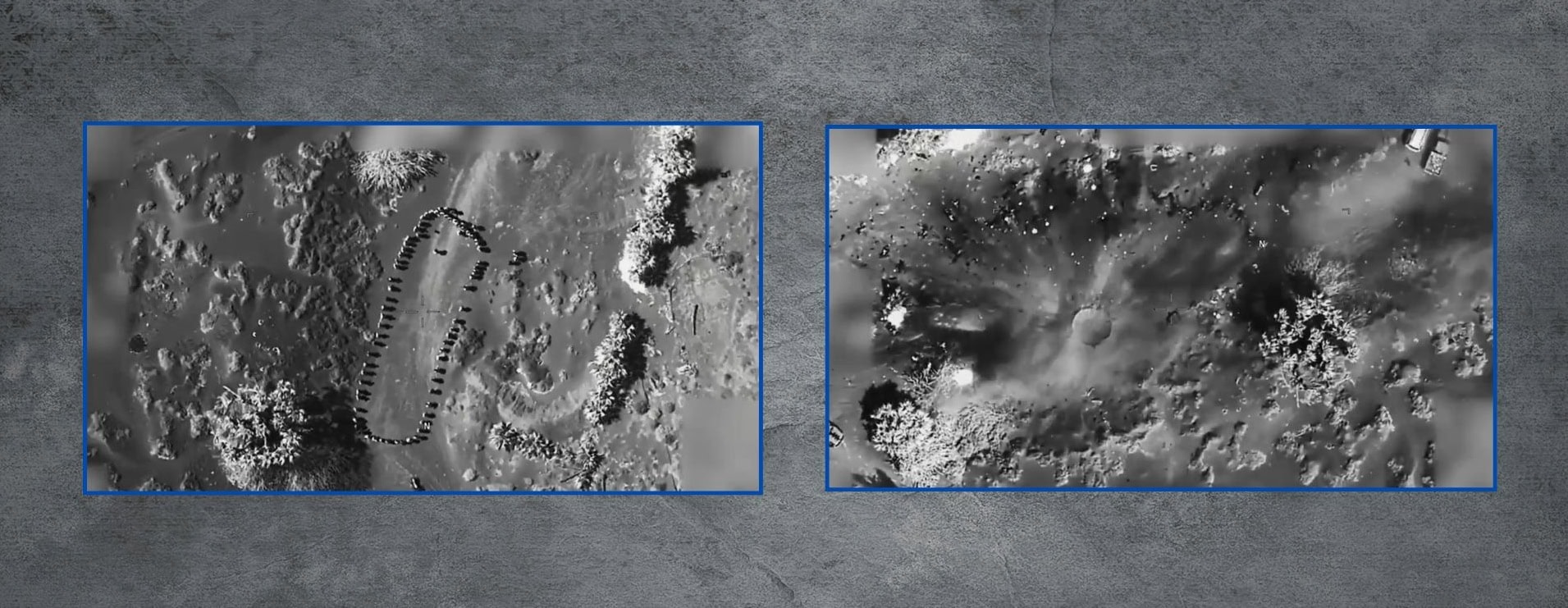
Screenshots of US President Donald Trump shared footage video of what he contends was a strike on Houthi personnel in Yemen (Credit: © Donald Trump / X)
Last updated on: 05-04-2025 at 5 PM Aden Time
|
|
Hodeidah (South24 Center)
In one of the most severe American strikes since the beginning of the Trump administration’s military campaign against the Houthis last month, a precision US airstrike has killed approximately 70 people in Hodeidah governorate, including Houthi field commanders and Iranian Revolutionary Guard experts.
Yemeni Information Minister Muammar al-Eryani confirmed on Friday that the strike, conducted on Wednesday, April 2, targeted a gathering in the Al-Faza area of Hodeidah governorate. According to al-Eryani, the site was being used by the Houthis to plan attacks against commercial vessels and oil tankers traversing the Red Sea, Bab al-Mandab Strait, and Gulf of Aden.
"The operation was precise and successful," al-Eryani said, highlighting the strategic importance of the target.
The Houthi movement has not officially commented on the strike. Yemeni sources report that the group has imposed a media blackout regarding casualties resulting from the attack.
Trump Shares Thermal Footage of Strike
US President Donald Trump posted thermal imaging footage of the airstrike on his Truth Social platform. The video, apparently captured by an MQ-9 Reaper drone, shows a circular gathering of dozens of individuals surrounding a central figure.
The thermal analysis reveals bodies appearing as glowing white spots against a dark background, suggesting the meeting occurred during nighttime hours. Seconds before impact, heat signatures intensify at the center of the gathering, indicating the possible use of electronic equipment or communication devices.
The footage then shows a direct vertical strike, resulting in a fireball and thick smoke cloud, with most heat signatures immediately disappearing—evidence of instantaneous casualties.
"These Houthis gathered to receive instructions on an attack," Trump wrote in his post. "Oops, there will be no attack by these Houthis! They will never sink our ships again!"
Strategic Maritime Infrastructure
The Al-Faza area has been a focal point of concern for forces allied with Yemen's Internationally Recognized Government. A report published by the ‘South24 Center’ on August 1, 2024, revealed satellite imagery showing two artificial maritime channels dug by Houthi forces, extending from the Red Sea to the Al-Tuhayta area of Hodeidah.
These channels, described as part of an "Iranian plan to transform the Red Sea into a military sphere of influence”, have reportedly been used by the Houthis to plant explosive-laden boats. The Houthis have also converted the main fish landing center in southern Hodeidah into a naval headquarters, according to a statement from the ’Joint Forces‘ operating in the region.
Discrepancies exist regarding the infrastructure's scale. While Yemeni forces estimate one channel to be 210 meters in length, South24's analysis of the tunnels, using Google Maps, found the length of one of the canals- which merges with another canyon stretching from the coast to the road in the Al-Faza area – exceeds 1.3 kilometers.
Analysts believe this maritime infrastructure has enhanced the Houthi capabilities to conduct attacks against shipping in the Red Sea, potentially explaining why Al-Faza was selected for the April 2 US strikes, amid escalating maritime attacks and intensified US reconnaissance in the region.
Billion-Dollar Military Campaign
The strike is part of a broader US military campaign launched on March 15 against Houthi targets in Yemen, in response to the militia’s repeated attacks on commercial shipping in the Red Sea since late 2023.
According to CNN, the US operation has cost approximately $1 billion to date. The campaign has employed strategic munitions including long-range JASSM missiles, GPS-guided JSOWs, and Tomahawk missiles, alongside sorties by B-2 bombers operating from the Diego Garcia base.
Sources familiar with the operation revealed that the Pentagon is considering requesting additional funding from the US Congress. Defense Department officials have expressed growing concern about depleting strategic munitions stockpiles that would be crucial in case of any potential confrontation with China.
Despite the intensified air campaign, defense sources quoted by CNN indicate the Houthis have maintained fortified positions and retained capabilities to launch missiles and drones. The group has reportedly shot down two MQ-9 Reaper aircraft in the past two weeks.
"The strikes have weakened the group's communication and forced them to operate in a more complex environment, but they have not stopped attacks on navigation," one official told CNN. Another noted that most of the targeted Houthi leadership has been from the middle ranks, with the exception of a drone unit commander killed in a previous strike.
Iran Reportedly Withdrawing Support
In a potentially significant development, The Telegraph newspaper reported that Tehran has ordered the withdrawal of its military personnel from Yemen to avoid direct confrontation with the United States.
A senior Iranian official was of the opinion that the Houthis "are living their last days" and suggested there is no point in continuing support following the collapse of the network connecting them to Hezbollah in Lebanon and the Assad regime in Syria.
The Iranian source added that the Houthis' position within Iran's regional axis has significantly declined as they have become "the only remaining link in a network that has disintegrated" amid US and Israeli military actions and the erosion of Iran's regional deterrence capabilities.
Previous article